INDIE SLEAZE FLASHBACK: The Cobrasnake And PreInstagram Y2K Nightlife Revisited
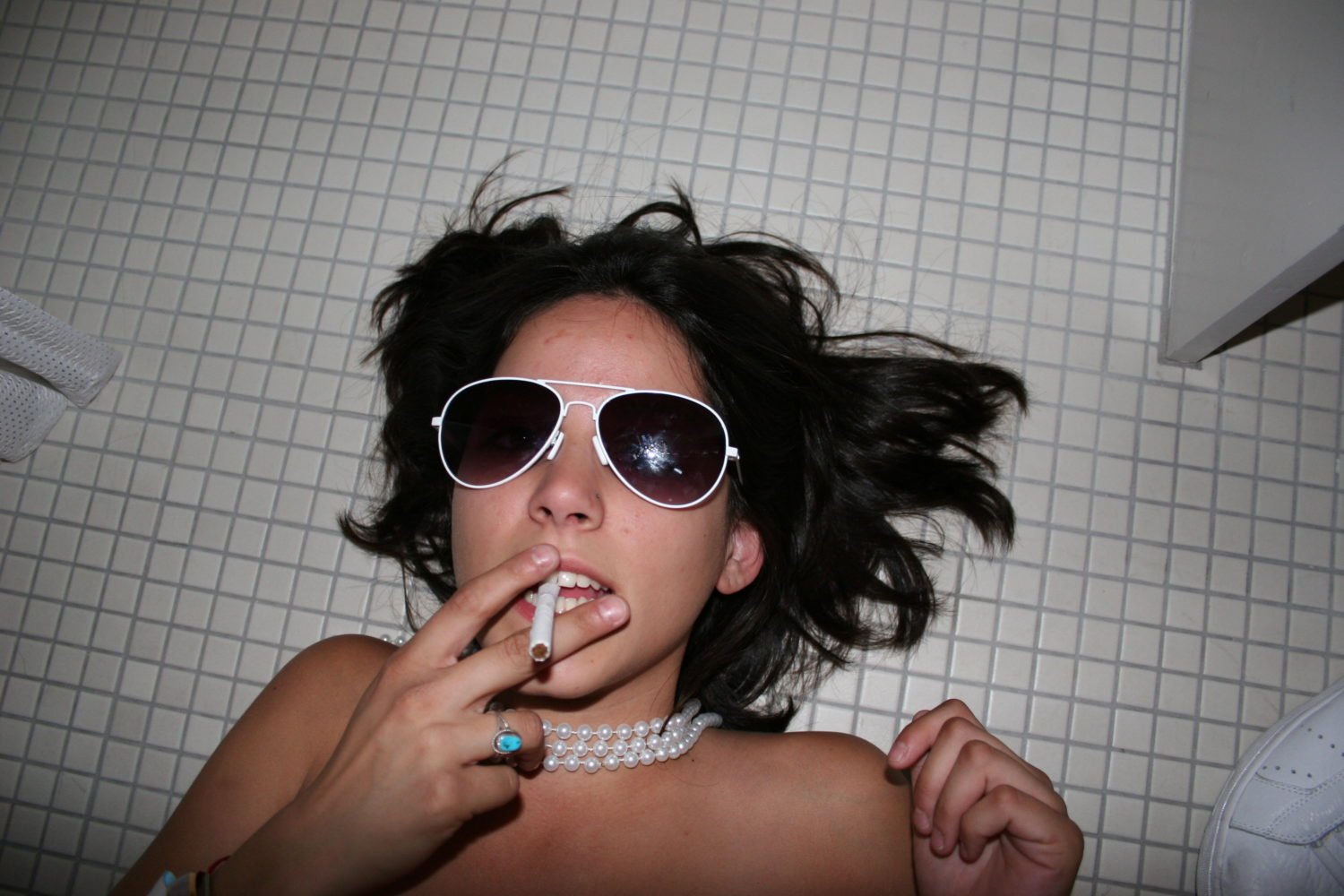
(Note "cobra snake hunter")
Indie Sleaze Flashback: Cobrasnake and a new look at nightlife before Instagram Y2K
It's hard to imagine or barely remember now, but once upon a time there was a world without "selfies". Print media and television were the main "influencers" of culture. Phone text messages, or "sms" as they were called, were a strange new way to communicate. And a brave new social ecosystem has emerged online, allowing us all to redefine ourselves by creating something we never had before: an online persona. Friendster was the first to give us a place on the web to show us who we know and who our friends know, encouraging connections. But it was quickly overtaken by MySpace, a sexier and smarter online dating site and, as its tagline advertised, a "friend swapping place" where we posted our interests and playlists, building a better network of real friends. fellow nerd, co-founder Tom Andersen).
Images were definitely the most important part of this equation, but we didn't always have to choose between images like we do now; not necessarily digital. We didn't document every move, meal, outfit, concert, or sunset because there wasn't a convenient way to do it. For example, if you want to photograph a wild night out on the town, you'll need to bring your camera or hope the party or club has a photo booth, or better yet, a real travel photographer who can post photos on site. . . . . another day. Earlier, Mark "Jobrazmea" Hunter, a curly-haired teenager from Beverly Hills and former assistant artist to Shepard Fairey, took the idea and made it happen, donning an SLR camera and meticulously documenting the Los Angeles nightlife scene. . just because he can.
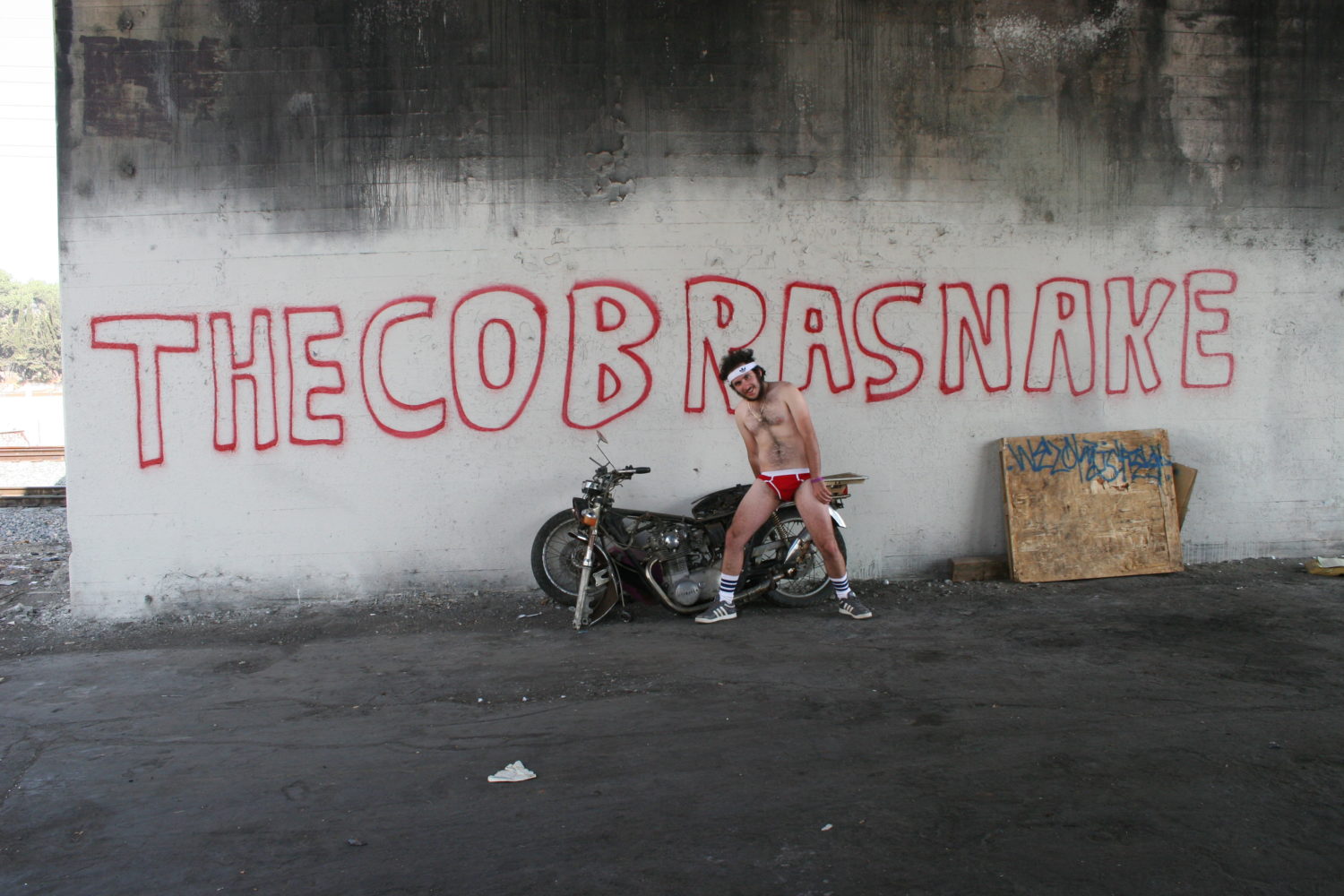
(Mark "Cobrasnake" Hunter)
Everyone could, and after all, many tried to do what he did, but no one recorded what he accomplished, and no one wrote it all unashamedly, directly, and extensively. Cobrasnake's colorful sportswear aesthetic was eye-catching, and its laid-back yet ironic fashion aura attracted a fun-loving crowd of equally weird and wonderful youth—some famous, some underground infamous, and even more. picture. Many were eager to scream in front of his lens like drunken models in frightened fantasy shoots, and when he saw that there was something special about certain scenes, he activated his muses.
But aside from the minor appeal of tousled-haired anti-model Corey Kennedy and his ilk, his goal was to redefine fame in the city that represented it. Los Angeles itself was his greatest source of inspiration, at least until he began traveling the world to sponsored shows and parties. It was mine, too, after I first found myself covering nightlife at LA Weekly in the early 1990s as an assistant to that publication's lovable and edgy column, The Dee Da (whom celebrities like Courtney Love still praise in interviews). is a columnist himself.
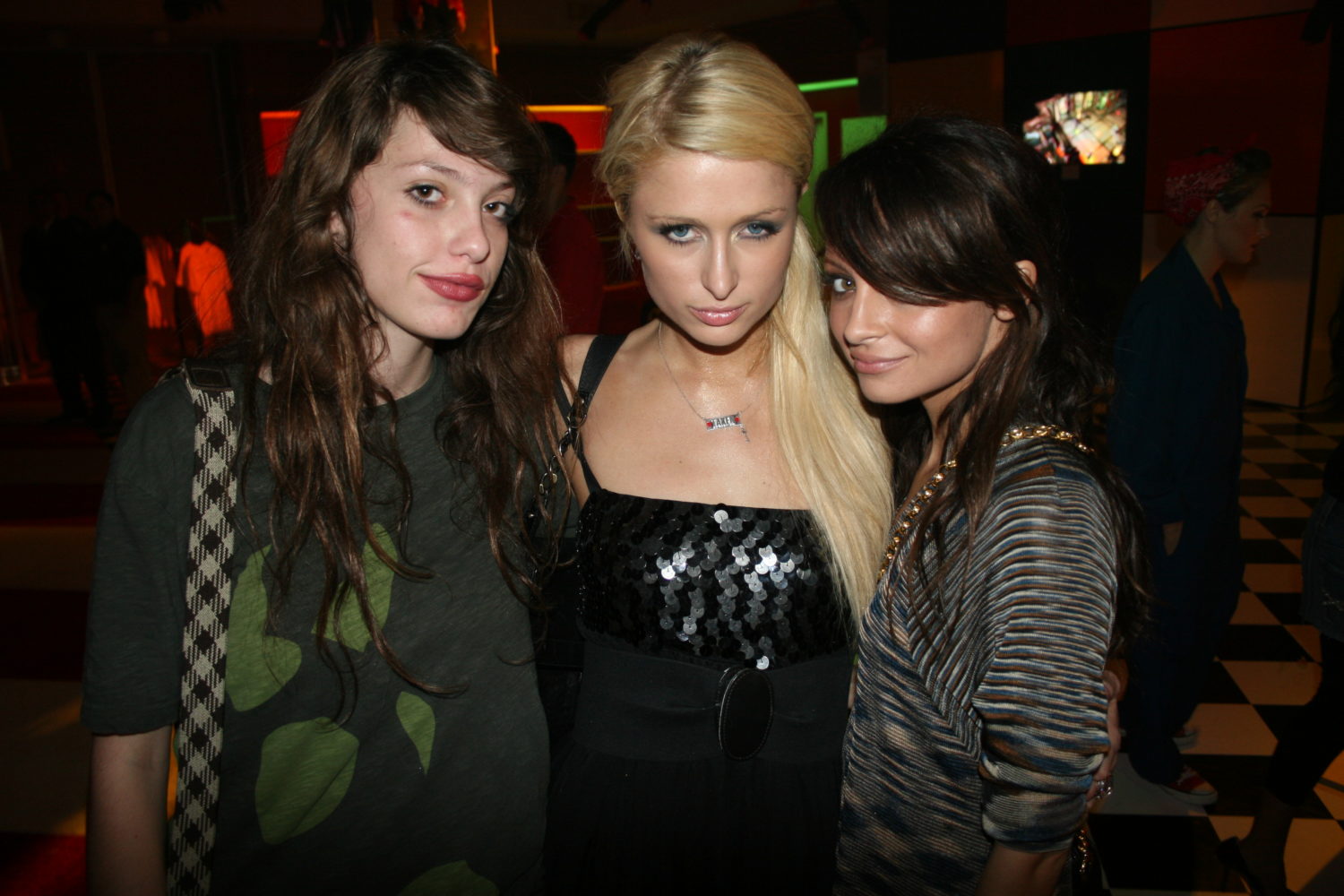
Corey Kennedy, Paris Hilton and Nicole Richie (Mark "Cobra Hunter")
In Nightranger, which chronicles the scene of the early 2000s, I tried to celebrate the debauchery and diversity of LA's craziest events with less ironic than my predecessors and a wider scope outside the velvet ropes: drag clubs, punk parties. , art. shows, red carpets, gothic caves and hipster parties. But event photography was more challenging and when I met Mark I immediately saw the magic of what he does. Also weekly editor Lori Ochoa (currently at the LA Times ). Hunter took some quick photos to accompany my entry in this post. We ended up printing the columns side by side - it was called Snakebites and it was a test board from his website - Polaroidscene.com (after the peace) was changed to Cobrasnake.com .
In 2004, just a year after we first met and worked together, LA Weekly featured Hunter's photos on the cover of the party's new revival. A few years later, when she moved on to other projects and commercial photography, I got a great camera and started a new column in LA called Lena to cover the events of the late 2010s. still writes about nightlife (and more) as the editor of culture and entertainment magazine LA Weekly .
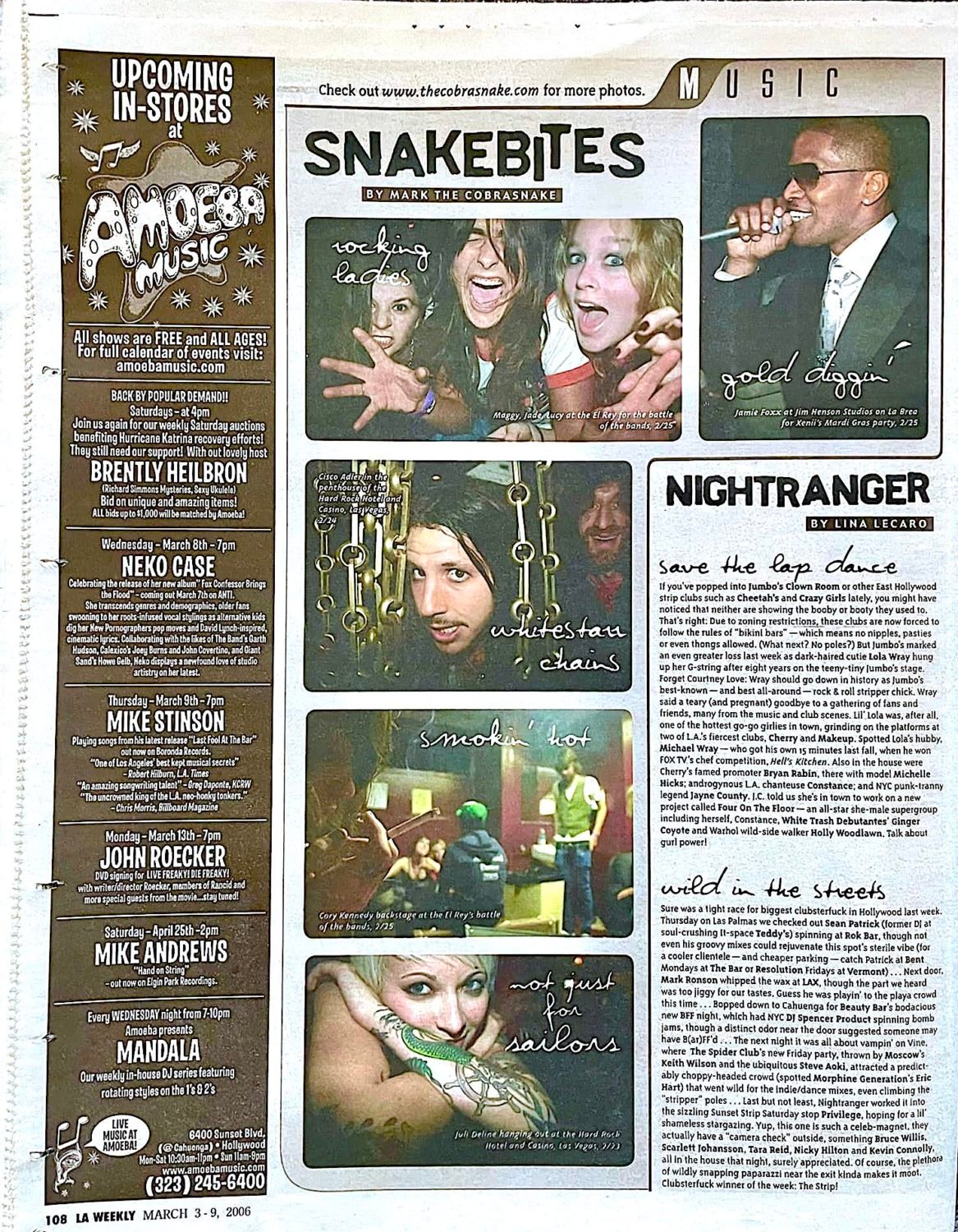
Los Angeles Print Weekly, 2006
Archive of the Brave Age
Hunter Rizzoli 's recently released book, The Year 2000 Archive , is an ambiguous experience full of memories. For me, it's like a yearbook or a family photo album, and a curated collection of special scenes that I've covered in abundance over more than a decade, even when I was a mom at my best. . My ex-wife was a chef at Cinespace, a hot spot on Hollywood Boulevard that eventually became the epicenter of the era's "indie cheap," as it's called today. I was a regular at Cinespace Tuesdays, hosted by Rachel Dean and DJ Them Jeans, then became Dim Mak Tuesdays when promoters Frankie Chan and Steve Aoki parted ways and rising star DJ Aoki became known for his own label and troubled discography. It was Cobrasnak's home port. His documentation of what was going on there and nearby on Cahuenga Boulevard (nicknamed the "Cahuenga Corridor" by my friend and LA Times nightlife columnist Heidi Kuda) sparked a cultural shift that spawned clubbing in Los Angeles. Los Angeles lifestyle. General. media card beyond movie stars. It got to the point where even real celebrities (Paris Hilton, Lindsay Lohan, Hilary Duff) got together and started dancing with fashion groups. It certainly increased the popularity, along with the rise of Facebook and later Instagram, which probably also killed it. Subversive subcultures rarely survive mainstream popularity, but if their leaders are talented and intelligent, they can succeed later. Chan, Aoki and Hunter did just that.
Hunter says it's the perfect time to see her serious fashion and hot antics in book form. "Actually, it took a long time. I think I should have done it back in the LA Weekly days," he says. "But now we've had enough time to think about these photos. As you know, we were both there for a very exclusive and exciting moment. It's great, some people are writing our LA Weekly columns when the book comes out. they remember. almost 20. Everything was very different: no social networks, no Uber, no smartphones, time was easier.
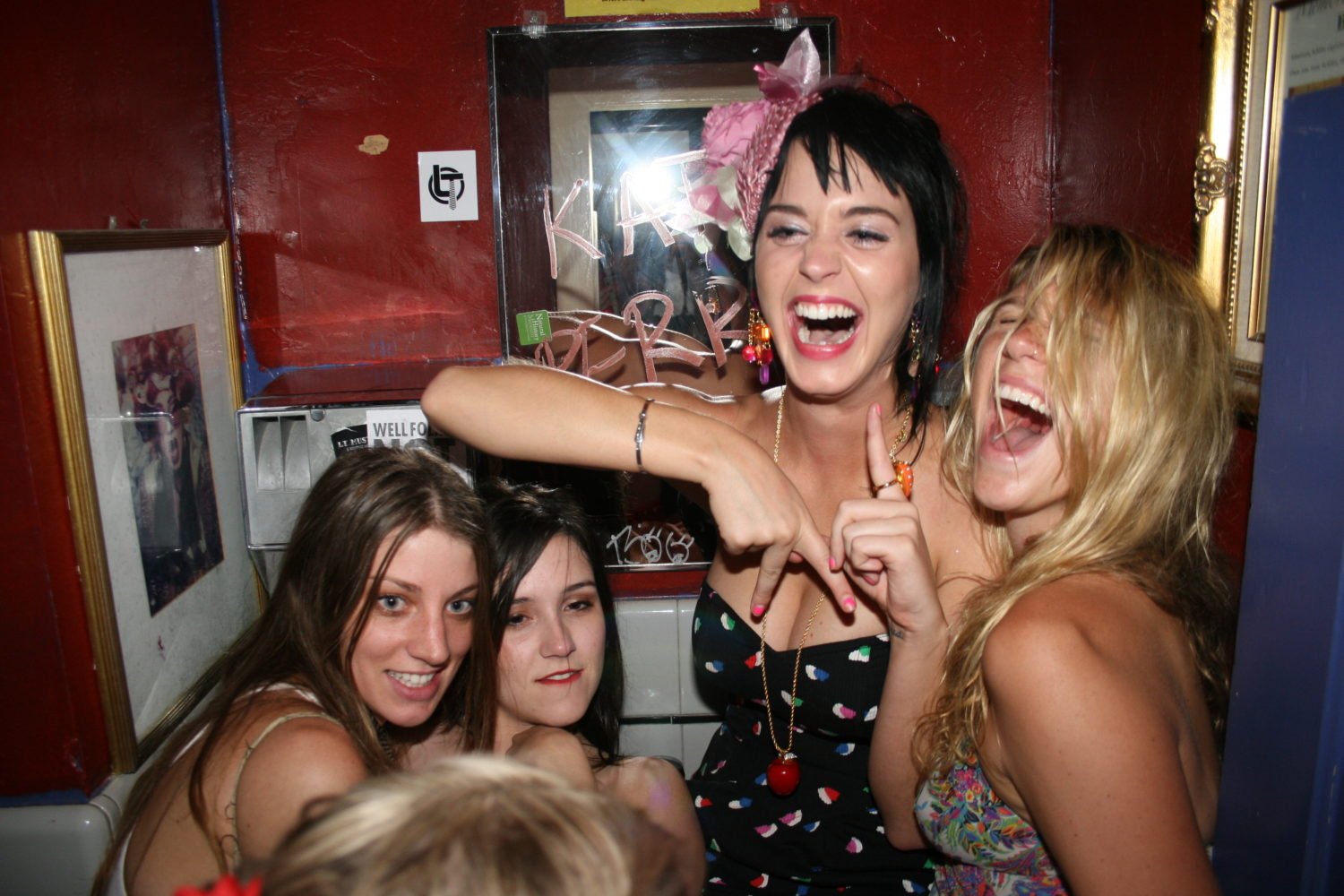
Katy Perry and Friends (Mark "Cobrasnake" Hunter)
But how did Hunter's pictures surpass the rest and ultimately set the standard for beauty? "I think it was therapy, that's what people always attribute to it," he replies. “My blog told the story of the night. It wasn't just for everyone and everything. It was what I thought was cool and interesting, but also the early days of indie. I enjoyed celebrating the bands, arts, and cultures that were so interesting to me, and I wanted to showcase that on the blog. It was unconventional back then because most of the media would only put a few photos in a magazine, you know, rock photos before Spin and Rolling Stone , one or two photos. And the crowd? What about behind the scenes? How about anything that provides a picture of what the real show is?
Hunter's attention to detail and ability to capture individual movement, energy and charisma served him well as he toured Los Angeles clubs and gigs. It was fascinating and even attracted those who did it.
"He was such a character, especially at the time—he was 18 but looked 35 with the big hair and chest hair—we were like, 'Who's this guy?'" Chan recalls of his first meeting with Aoki. in the early Beauty Bar commercials called Fucking Awesome. He just looked around the room and captured the spirit of what we were doing and the photos were fantastic. When it comes to partying, you can have a great night, but you can't see another perspective of experiencing it from the outside - you're in the DJ booth or you're on the dance floor, or kissing someone, or smoking behind me. I've never fully imagined what it's like to be at a party, the first time we experienced it exactly, it came back the next week and became an instant staple.

(Mark "Cobrasnake" Hunter)
Not only did Fucking Awesome break down the barriers of nightlife musically (they regularly played hip-hop, indie rock, classic rock and even pop in the same sets), but their audience was one of the most diverse I've ever seen. . for a long time. From bottle crates full of MTV The Hills blondes advertised by Brent Bolthouse, to black-clad ghosts in local goth and fetish clubs, wavy mops at Club Bang and Evil Club Empire events and new hip-hop clubs. It was a special time when my favorite gay haters in WeHo showed me every week in Hollywood. At first it took effort and a lot of driving to cover them all.
At the time, indie cheap was not a label that anyone used, although Vogue now presents it as a true retro trend. Whatever you call this scene, it definitely brought the various factions of the city together. It evolved musically as blogging became more popular and people started making beats in the bedroom. DJs began to take over rock anthems, eventually creating a genre called "blog house" because it combined the simplicity of the previous decade's electroclash trend with even older rave elements. . As a former paper junkie and bootlegger in the early '90s and a fan of Larry Tee's Berlin Beatsmith and the minimalist electro club scene that ran out of New York, it was exciting to see these acts reinvented when things were new again. . and back in LA Cobrasnake, Chan and Aoki were at the forefront of passing these elements on to a new generation, and it was enhanced and refined like never before by the Internet, eventually becoming a global phenomenon.
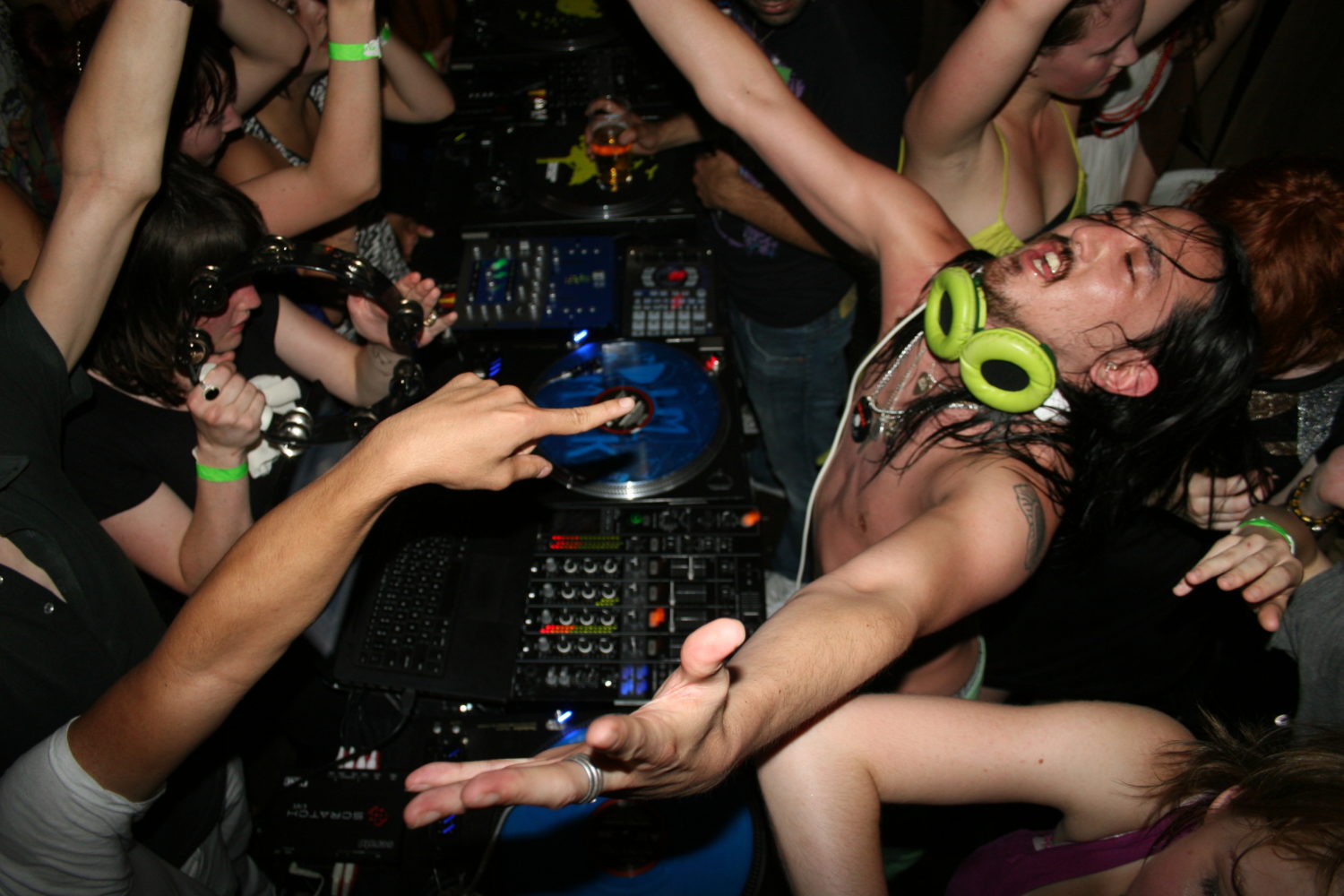
Steve Aoki (Mark Hunter "Cobrasnake")
Sleep when you die
Hunter's book and his portrayal of the era are "nostalgic to say the least," says Aoki, who is now the top DJ living in Las Vegas, as well as an accomplished producer and the subject of a biopic. Netflix. . for his life. "That was definitely the birth of 'DJ Steve Aoki.' Being in Los Angeles when Cobrasnake was documenting everything I did made me more attractive not only as a DJ, but as a cultural figure in the world we exist in this bubble. Children in the club: how we developed, how we communicated, socialized and communicated around the world.
"I think about the importance of these little corners in the world and how we come together and support each other then," Aoki adds. “Mainly and especially the French alliance with Ed Bunger. Pedro Winter/Business Pi and his entire community in France, together with the Dim Mak community, is one such exponential calculation.
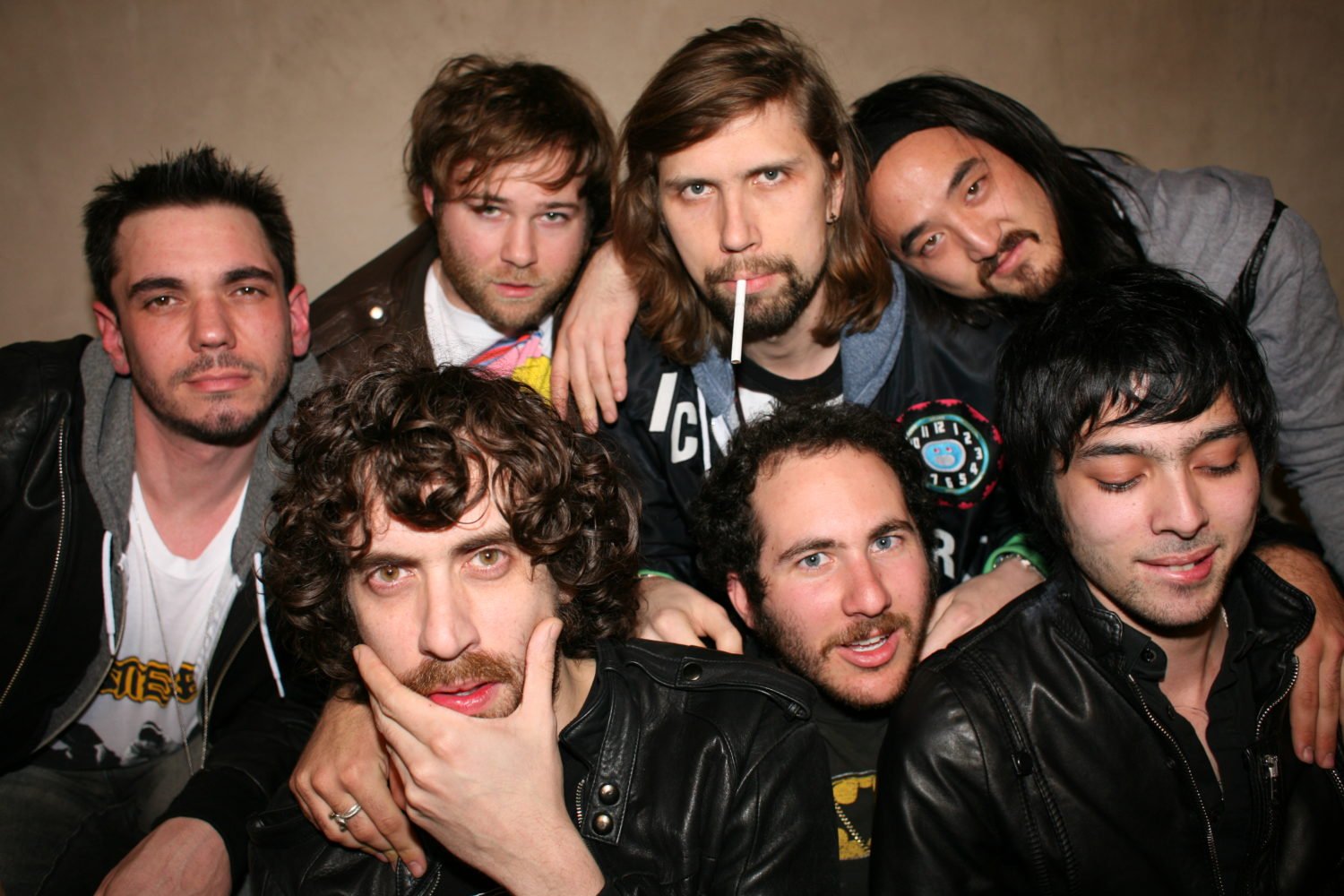
DJ AM, Aoki, Hunter and the Ed Banger Crew (Mark "Kobraznake" Hunter)
Starting out as Daft Punk's manager, Winter founded the electronic music label Ed Banger Records, signing artists such as Justice, Cassius and more. Starting the trend of musicians acting as DJs while bands such as Interpol, The Killers and Mickey Avalon played turntables in their early clubs, Chan and Aoki soon began using a more techno sound in their clubs, and the Banger set was at its peak. . When they broke up, Chan threw a competitive party called Check Yo Ponytail and started his own marketing agency, IHEARTCOMIX, while Aoki performed at various clubs around town, notably with his friend DJ AM. He has also remixed and produced music with Blake Miller's Moving Units under the Weird Science banner, and released his own DJ mix album Pillowface and His Airplane Chronicles in 2008. Will.i.am, LMFAO, Lil Jon and Diplo to name a few, as well as appearances at all the major festivals around the world. He's a true superstar with chart-topping hits and Grammy nominations, and if you listen to him, his friend Kobrasnak was instrumental in his early success.
"It would have been different," Aoki recalls. "Mark had an audience and they were close to Los Angeles, the social culture, the lifestyle culture, the way people dressed, the way people looked. "Music is definitely the connective tissue of culture. " There's more to the game: the lifestyle behind the music is well documented by Mark.
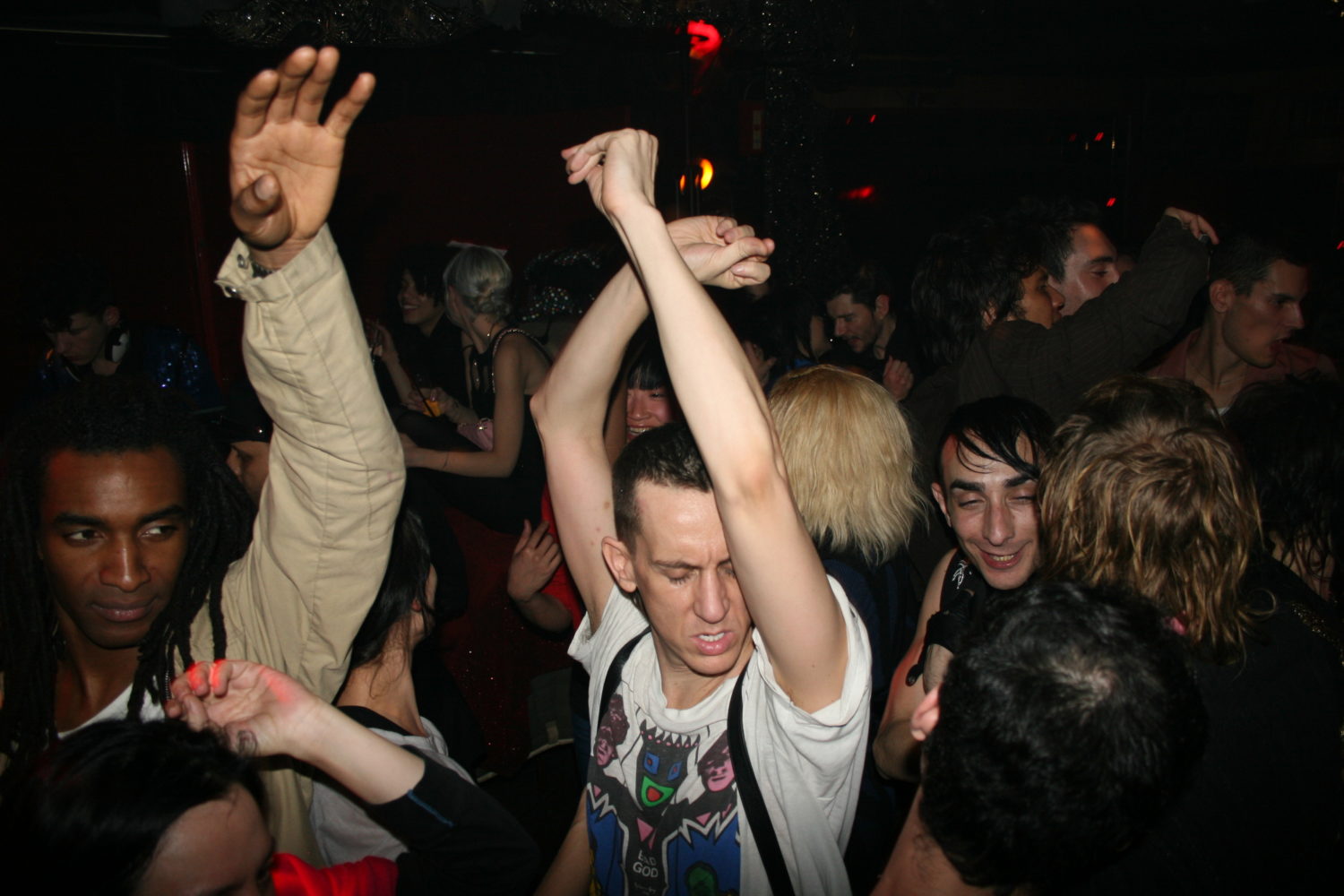
Jeremy Scott (Mark Hunter from The Cobrasnake)
As I wrote before, I first met Hunter in the VIP section of Coachella in 2003. Dressed in tight Dayglo athletic shorts, socks, and a fabric headband, she was striking. But what really caught my attention was his ability to focus on the festival's most charismatic attendees, capturing not just their ensembles, but their essence, sometimes within seconds. When he asked me for a picture, I was delighted - I made the cut - and like everyone else, I was excited to go to his site the next day and see my picture next to the beautiful and robust artists.
His site was a hilarious story and we all wanted to be in history at some point. It was creating exciting new frontiers as the pre-Instagram and post-paparazzi zeitgeist readied for more. Around this time, LA Weekly introduced its own list of blog content, including a collective guest report of which I was a part, called Style Tip . Little did we know how big blogging would become and how social media or technology would take over. Images have always helped define culture, but at the time the existence of computers and smartphones for our interactions was incomprehensible, let alone the damage they would do to modern media.
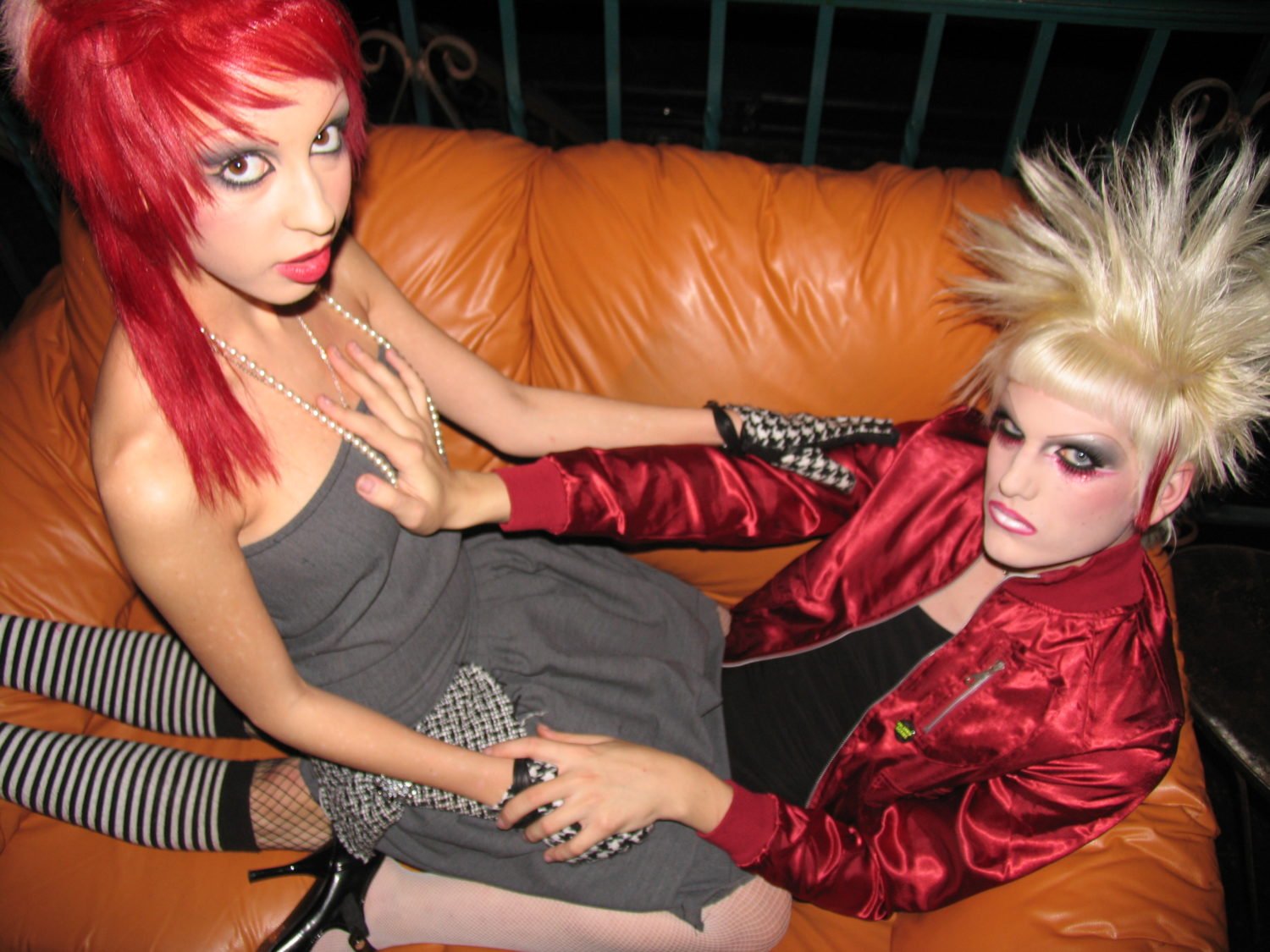
Geoffrey Star and his friend (Mark "Cobrasnake" Hunter)
the big picture
Outside of clubs and festivals, sponsored parties—Coachella in the desert, Southwest, Sundance, etc. - has become more and more part of pretentious entertainment that people want to view voyeuristically through an internal lens like Hunter's. The noise and fame began to overshadow the nightlife, but she maintained her good looks, photographing big names (Kim Kardashian, Katy Perry, Lady Gaga and Kanye West can be seen in her latest photos) alongside the nobility with an egalitarian look. . And because everyone knew who he was, few people had the means to match.
Publications like Anthem, Filtri, Vice, Urb, and Paper (the last three of which I freelanced for the LA Times and Weekly ) published their scene-oriented prints as complementary pieces. and online journalism. . The cover conveyed the era's street chic and grime mystique as well as marketing potential. Vice , especially through its television channel, has adorned a similar glamorous aesthetic with its magazine that has evolved and grown over time. As online platforms began to take shape, branding became more important than ever, and media began to create their own big parties. The practice continues today, although such journals have been hung up on the thread or are long gone.
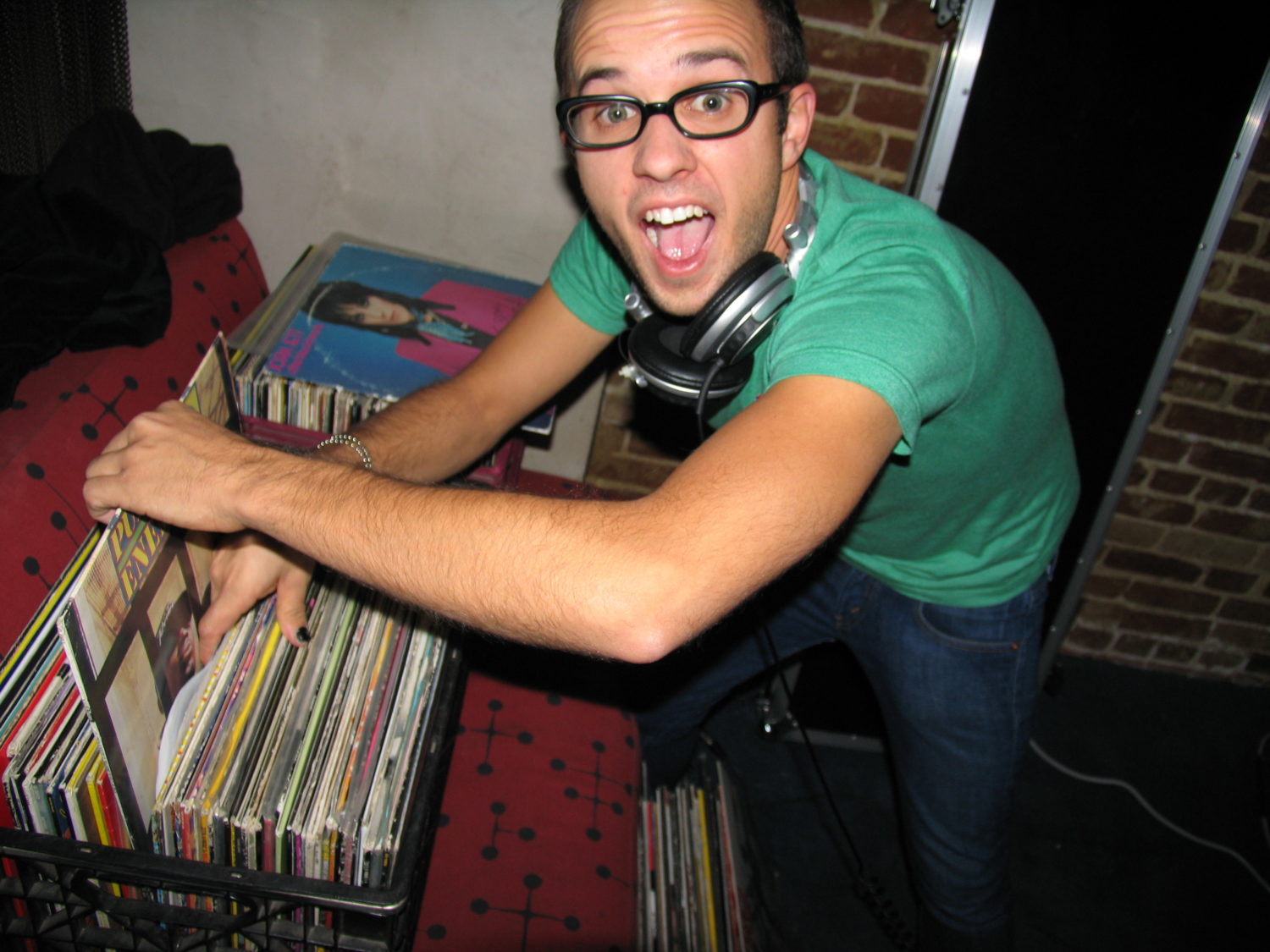
Frankie Chan (Mark "Cobra" Hunter)
Like his record label Aoki, Chan harnessed the power of marketing with IHEARTCOMIX, whose logo was on all the early flyers—remember the actual flyer printed on the paper? - Along with Dim Mak and The Cobrasnake URL. In 2006, Chan celebrated his first solo Comix event at SXSW with Peaches, She Wants Revenge, Uffie, and Simian Mobile Disco. I also remember that year, not only did I DJ a few events myself, but I also covered the festival for LA Weekly.
Today, IHEARTCOMIX is one of the industry's most successful content marketing and creative studios, working with everyone from Disney and Marvel to Interscope and Beats by Dre. Many of the younger patrons who knew Chan as a promoter are now in senior positions in the entertainment industry, and the connections serve them well. As technology and public relations developed, things became more complex, and Chan said he saw things from the perspective of "the whole group of brands" from the beginning. "Since I was a kid, I've been hooked on movies, comics, TV, and music through MTV," Chan explains. "These are the things I've learned all this time. So even when I was promoting a show, whether it was a punk show or a nightclub, my mind was too busy to think about things like movies or comics. This approach really caught on because it was different from what most people do.
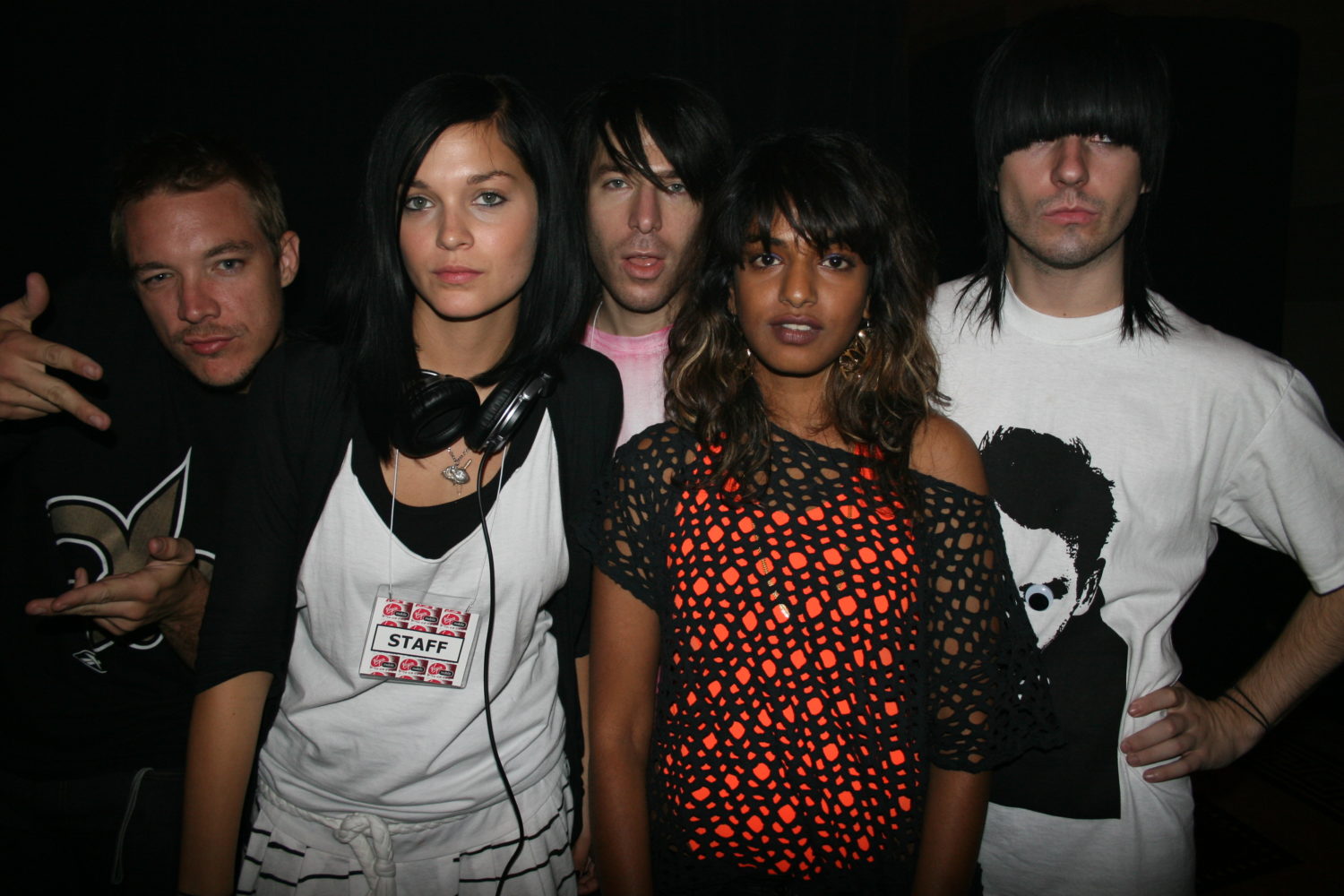
A diploma that disappeared without news and developmental defects (Mark "Kobrasmeya" Hunter)
Photography has always been and always will be an important part of marketing a lifestyle for consumers. When Hunter's work became a familiar part of the pop culture landscape, he began giving major concerts outside of Los Angeles, including New York Fashion Week. The gap was filled by others. By the way, Merlin Bronkes from New York had his own photo blog called LastNightsParty, and it was fun to watch two guys compromise, taking pictures of each other's city from time to time. Shadowscene, Rolling Blackouts, Rony's Photobooth, and Polite in Public emerged during this time, providing holiday images to the millennial masses eager to document their exploits more to share on new social media platforms. Dova Charni's T-shirt production company changed the mood of the masses and sold many socks and tops. None of this happened by accident.
"My images began to spread on the Internet, and then when brands appeared, what good news, and the trainee pointed me to my blog," Hunter shares. "I was very inventive in the way I worked with brands like Robin Hood. Every time I was hired, I gathered with all my hipster friends. We immersed ourselves in unconventional design aesthetics, and this was so important to me, because we brought people out of the darkness and honored them with these campaigns.

TheCobrasnake.com
Memories
It's good or bad, but turning everyone, especially non-traditional people, into models can be Cobrasnake's greatest contribution to the media. The new generation of young people who grew up on Instagram and TikTok seems to understand this. The Hunter's Rizzoli launch party was held at the Dolls Kill store in Fairfax late last year, and we watched it continue like the good old days. Chan even organized an event where the children of Generation Z were in revealing Electric Daisy carnival dresses, face ornaments and lolita-style outfits. It is clear that the 20-year cycle of the trend is at its peak and there is no going back. Low-rise jeans and open flip-flops, metallic accessories, contrasting geometric patterns, Kanye West sunglasses and the updated Dolls Delia brand — all this contributes to the new retro charm that is happening right now. .
Around the same time that "Archive 2000 " was released last year, the Bloghouse book Never Alone Again was released, as well as the documentary film "Meet Me in the Bathroom" (based on the book about the New York music scene in 2001-2011 годах) and the podcast Date with the Night, devoted to everything that is happening. Festivals are also related to that era: at the spring festival Just Like Heaven, some of the most popular groups of the early 2000s perform, including The Yeah Yeah Yeahs, MGMT, Hot Chip and Ladytron, and there is even a line-up of "Cinepace DJs". from Eux Jeans, advertised on flyers.
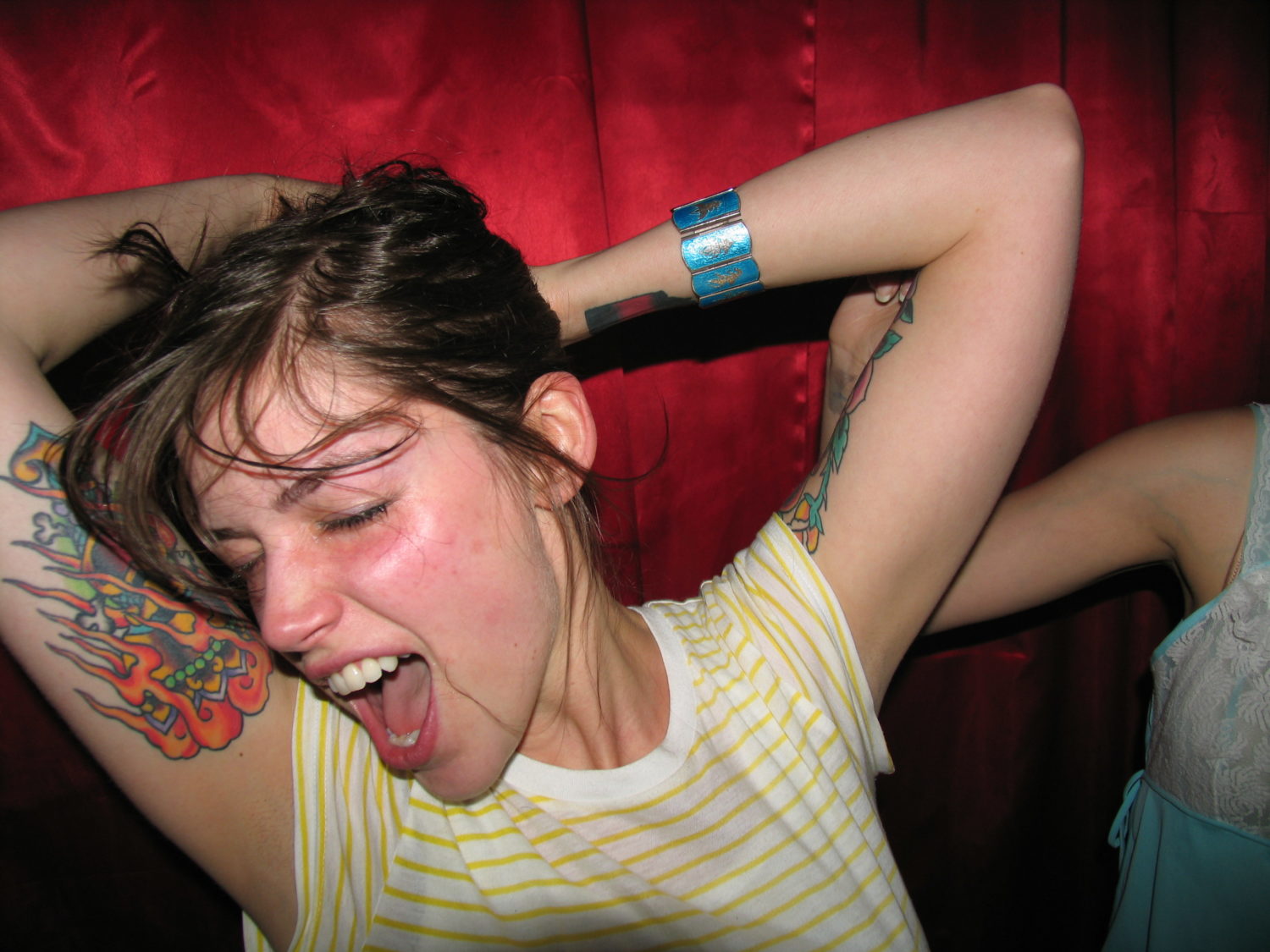
(Mark "Kobrasmeya" Hunter)
As for Hunter, after several years working in retail with an old Hollywood store and creating a fitness team focused on walking and health, he now has a side business in real estate management. When he comes out, he, of course, remains the king of the wall, and his ability to evoke emotions at any moment has not decreased by an iota. He says that soon he will hold more events and, probably, he will have even more places in the future. "There are more than half a million photos in the archive... we cut them out for the book in 2010-2011, when social networks took over and changed the landscape," she says. "There are photos from 2010 to 2015, from which one more excellent book could be produced."
In addition to the novelty of millennial hipster hedonism, Hunter's images demonstrate unfiltered joy (literally and figuratively). They remind us of the past, and for new worshipers, they inspire the present. Camera phones were inevitable, and social networks grew in both directions, but Cobrasnake's self-promotion as a narrative art encouraged the reality and joy that had been missing, although it seems to have returned in a more filtered form. As his friend Aoki, who currently works on everything from NFT to clothes, and is still on tour, says: «He really captured the moment of absolute unrestrainedness in the most interesting, attractive and vulnerable parts of life. on music, or on drugs, or on life - whatever it was, he was there and constantly did it, creating his own subculture in the process.
Mark Hunter's Y2K archive is available wherever books are sold, as well as at rizzoliusa.com.
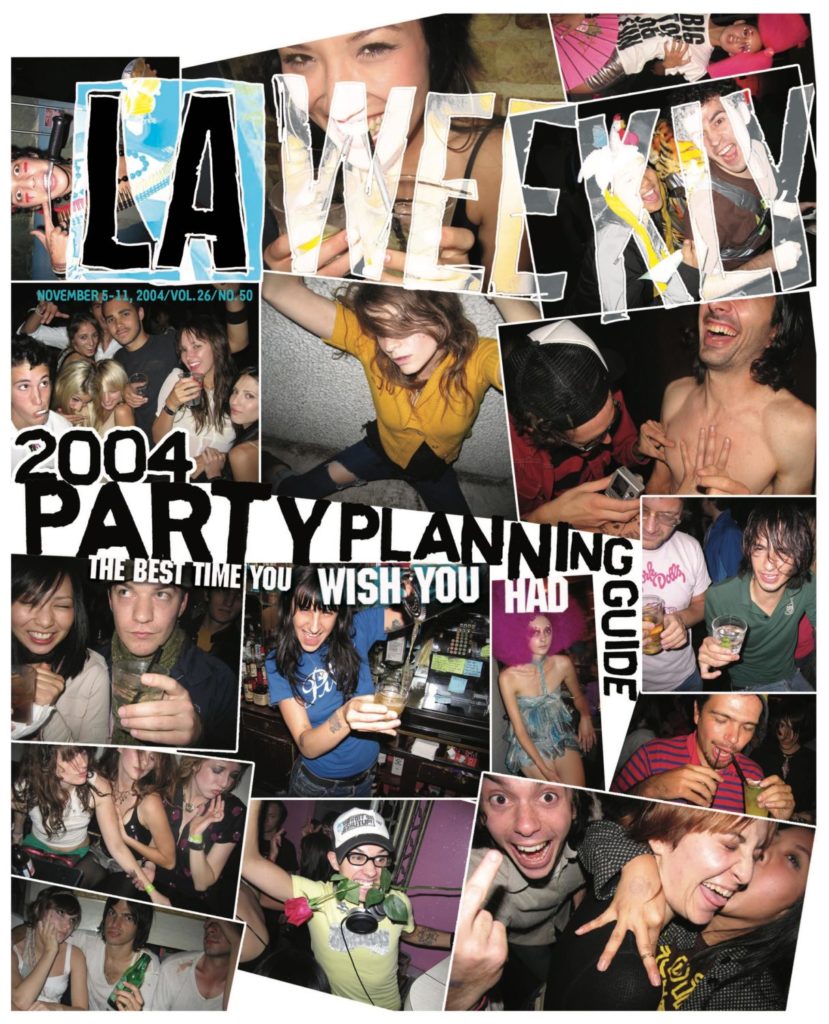
Cover of the evening edition of LA Weekly 2004 (Mark "Hunter of cobra snakes")
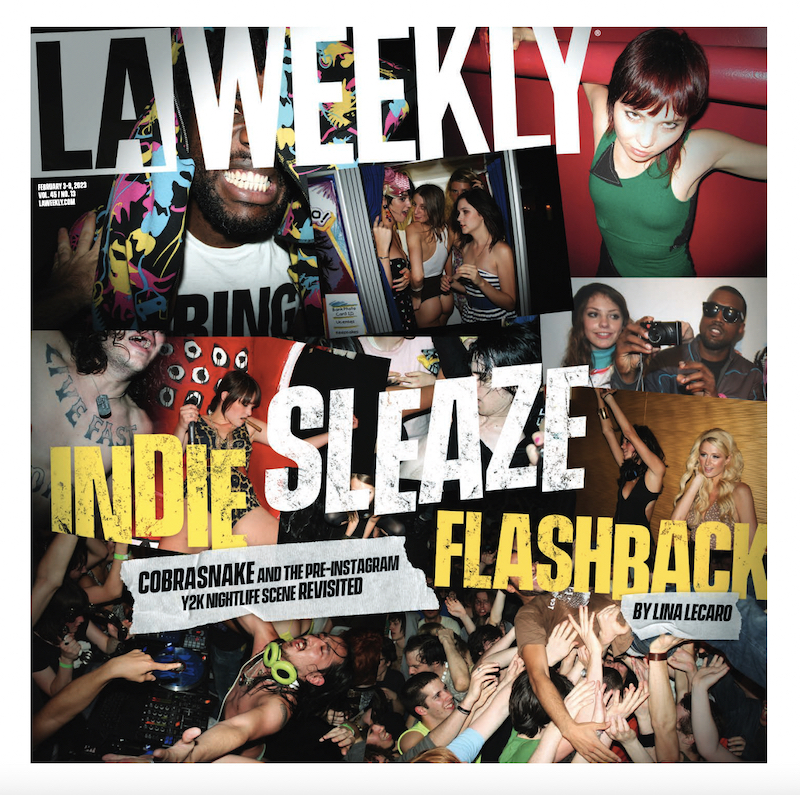
Tribute covers of our weekly Los Angeles 2023
Editor's Note: The following disclaimer applies to advertising and does not apply to this or any other editorial. LA Weekly Editorial does not and will not sell content.
Editor's Note: The following disclaimer applies to advertising and does not apply to this or any other editorial. LA Weekly Editorial does not and will not sell content.
Advertising Disclosure: We may receive compensation for some links in our stories. Thanks for supporting LA Weekly and our advertisers.


